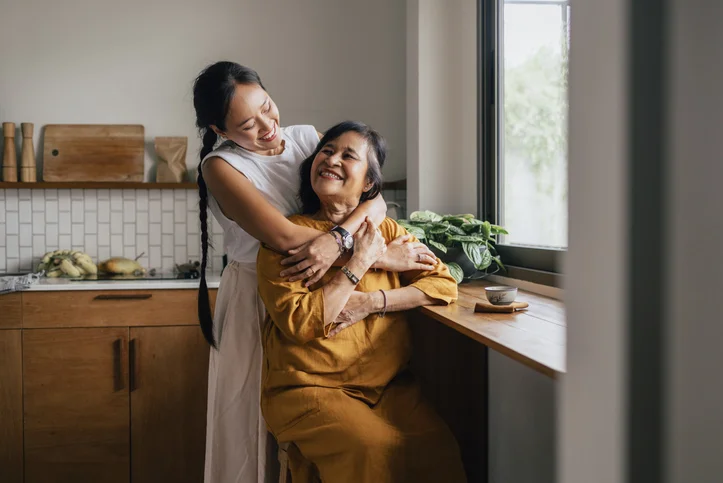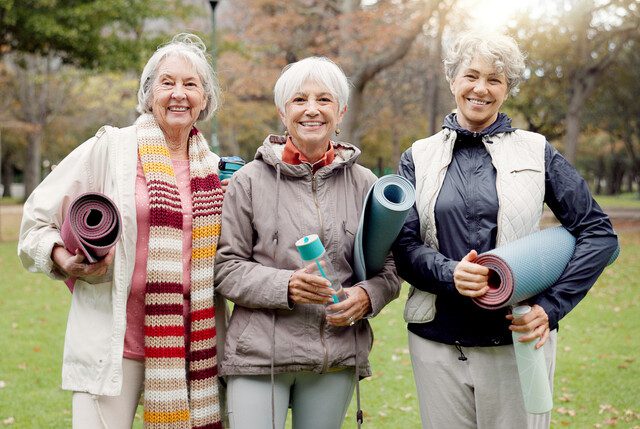For many older adults, remaining in their longtime home, known as "aging in place," can be comforting. According to AARP, 77% of Americans aged 50 and older wish to remain in their homes as they age. The familiarity of home, treasured memories, and a sense of independence often make staying put an appealing option. However, while aging in place may seem ideal, it comes with hidden social costs that can impact mental, emotional, and physical well-being.
Many older adults who live alone experience social isolation, limited engagement opportunities, and increasing reliance on family caregivers. In contrast, senior living communities offer built-in social connections, engaging activities, and a supportive lifestyle that fosters well-being and independence.
The Toll of Social Isolation on Well-Being
One of the biggest challenges of aging at home is the risk of isolation. As mobility decreases, transportation becomes more complex, and friends or family move away, many older adults find their world slowly shrinking. The once simple act of going out to meet friends or attending community events can become a logistical challenge, leading to extended periods of solitude.
Why Loneliness is a Serious Health Risk
Isolation doesn't just affect emotional well-being—it has serious health consequences. Studies show that loneliness is linked to an increased risk of depression, cognitive decline, heart disease, and weakened immune function. Research from the National Institute on Aging suggests that older adults who experience prolonged isolation are more likely to develop dementia. Without daily interactions and mental stimulation, seniors living alone may experience a faster decline in overall health.
How Community Living Supports Connection
Community life is designed to support socialization and connection. From communal dining and group fitness classes to social events and lifelong learning opportunities, residents enjoy countless ways to engage with others. These daily interactions help reduce the risk of isolation, promote cognitive health, and enhance overall life satisfaction.
Limited Social Engagement and Activities
Even for older adults who maintain friendships, logistical challenges can make staying socially active difficult. Regular outings and engagement in hobbies become more challenging to maintain without reliable transportation or nearby resources. Over time, this can lead to a reduced quality of life and a sense of disconnect from the outside world.
Barriers to an Active and Engaged Life
Even active, independent older adults can encounter unexpected barriers that limit their ability to stay engaged. Things like unreliable transportation, inconvenient scheduling, or lack of access to nearby amenities can make it harder to maintain a busy, social lifestyle. Environmental factors—like poor walkability or seasonal weather—can also get in the way of fitness routines or community involvement. Over time, these small hurdles can add up, impacting overall well-being and quality of life. These barriers contribute to a more sedentary lifestyle, increasing feelings of loneliness and reducing overall well-being.
A Fulfilling Lifestyle at Friendship Village of South Hills
Senior living communities offer a wealth of structured activities, recreational programs, and social events to keep residents engaged. There's something for everyone, from book clubs and art classes to wellness programs and cultural outings. Residents can explore new interests while forming meaningful connections with their peers, creating a fulfilling and enriched lifestyle.
The Financial and Emotional Toll on Family Caregivers
While aging at home may seem like the most cost-effective choice, the hidden financial and emotional costs often add up. Home modifications, in-home care, and an increasing dependence on family members can place a significant strain on seniors and their loved ones.
The Real Cost of Relying on Family Caregivers
Many family members take on caregiving responsibilities out of love and commitment. However, balancing caregiving with work, personal responsibilities, and their own health needs can lead to stress and burnout. According to the Family Caregiver Alliance, nearly 60% of caregivers report significant emotional stress, with many also facing financial difficulties due to reduced work hours or career sacrifices.
Why Aging in Place is Often More Expensive Than Expected
In-home care can be expensive, particularly as care needs increase. Beyond the cost of hiring professional caregivers, there are often hidden financial impacts, such as home modifications, medical equipment, and the rising cost of healthcare services. When considering the actual cost of aging in place, these expenses can quickly surpass the predictable costs of a senior living community.
A Supportive Solution for Families and Seniors
Senior living helps ease the challenges older adults and their families face by providing professional, round-the-clock care in a supportive environment. Residents enjoy maintenance-free living, access to on-site healthcare, and an active social life—all while their loved ones have peace of mind knowing they are safe, engaged, and well cared for.
Choosing a Lifestyle That Encourages Connection and Security
While aging in place may seem like the best option, it's important to consider the hidden social costs that come with it. Limited socialization, increased reliance on family caregivers, and the financial burden of home care can significantly impact quality of life.
Friendship Village of South Hills offers an enriching lifestyle that prioritizes independence, connection, and peace of mind. With ample amenities, engaging activities, and access to high-quality healthcare, our community provides everything needed for a fulfilling and worry-free retirement.
If you or a loved one is considering the next step in retirement living, we invite you to explore all our community offers. Contact us today to schedule a tour and experience firsthand how Friendship Village of South Hills supports a purposeful and engaging retirement.


